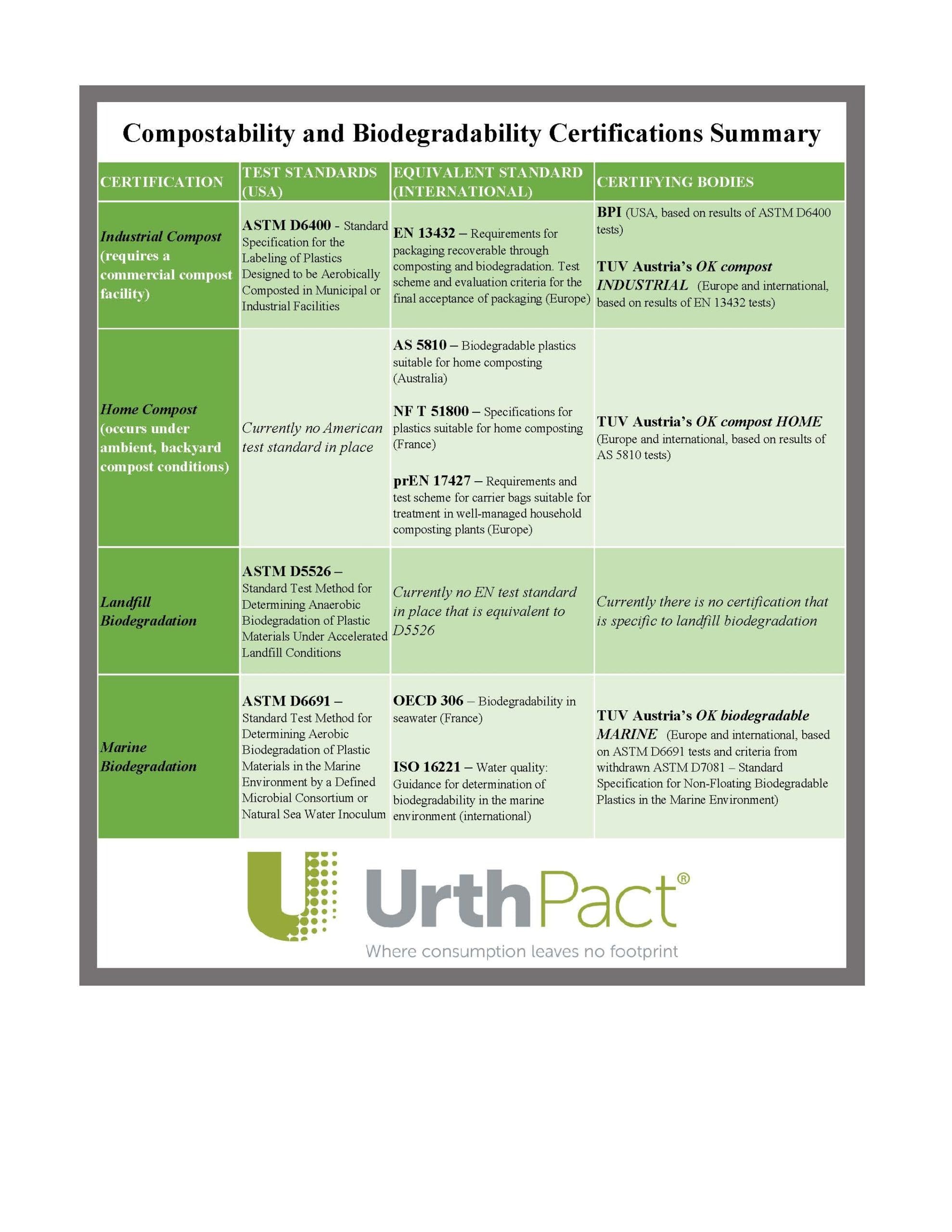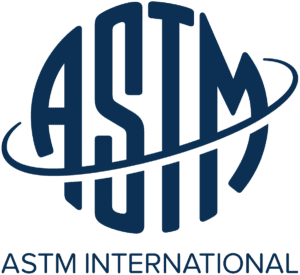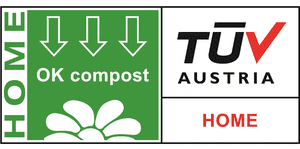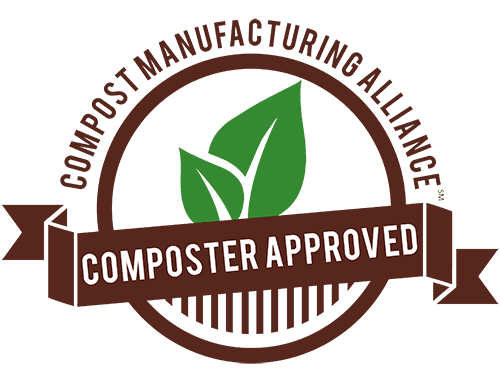Recent News and Updates
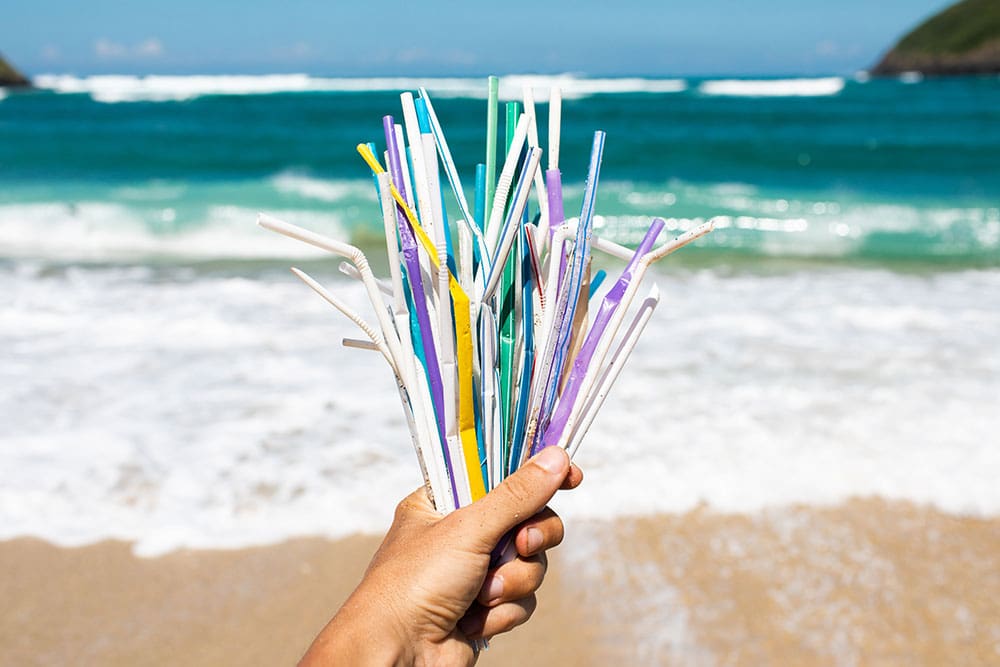
We Need More than Bans to Solve the Plastic Pollution Problem
Legislation on the usage of single-use plastics is changing our opinions of plastic products. A number of countries and states are leading the way in plastics legislation, implementing bans and regulations on a variety of plastic products and materials. The star of the plastics ban movement is the plastic bag, but the plastic straw has also become a rising star, as both of these products can (in theory) easily be replaced or removed from everyday life. And while bans have done an incredible job reducing our plastic usage, they alone cannot solve the worldwide plastic pollution crisis. Innovation must go hand-in-hand with bans, and the bans in place must provide room for companies to create and implement creative solutions to the problem.
In the United States, there are no federal bans or regulations on plastics. However, many states, cities, and local municipalities have moved ahead of the federal government and implemented bans on plastic bags, plastic straws, or even both. The two biggest states to highlight are California and Florida. Both of these states have miles and miles of coastlines and beaches, many of which are directly and negatively affected by plastic pollution. California became the first state to ban plastic bags, and Florida has the most cities with plastic straw bans in place. Other states should take note of their actions, and begin introducing bills and legislation to help curb the plastic consumption and production in this country.
One city leading the way in our home state with straw bans is Somerville, Massachusetts. They are one of the only cities in the state of Massachusetts to institute a plastic straw ban, and are leading the way to help the state reduce the amount of plastic it uses. However, it also raises some questions on what materials should be covered under a plastic straw ban. Somerville’s ban encompasses all plastic materials, including compostable bioplastics. Straw bans face a lot of backlash for 2 main reasons: many in the disabled community need a straw to drink a beverage, and because humans simply want the convenience and sanitation that comes with a straw. Compostable bioplastic options provide convenience, a positive customer experience over paper straws, an option for the disabled community, and most importantly, are of no harm to the planet. It’s important to understand the potential alternatives, so bans don’t accidentally eliminate something that can be an innovative and complete solution to the problem.
The world recognizes that plastic pollution is a problem we need to come together to solve. Of the 192 recognized countries in 2018, 127 have bans on plastic bags, 27 have bans against some kind of single-use plastic products or materials, and 63 have regulations in place for manufacturers to be responsible for the end-of-life of plastic products in some way. Clearly, we know this is a problem and are working to solve it. Bans and legislation regulating plastic usage and production is an incredibly efficient first step in the process. But we need to keep in mind that single-usage is not the problem, the material is. The idea of using a product once and throwing it away is fine, we just need to make those products from a more environmentally-friendly material that can still provide the experience a customer expects. UrthPact finds the solution quite simple: home compostable bioplastics. They check every box for the best alternative material: healthy beginning of life, healthy end of life, positive customer experience, and easy proper disposal. The home compostable revolution is only just beginning.

Certified Compostable – Breaking Down Compostable Certifications So You Don’t Have To
As our society continues our mission to help save our planet from plastic pollution, many organizations are making the switch to compostable packaging. At UrthPact, we truly believe that home compostable materials are the true solution to the single-use plastics problem. While bans are great for the short term, we can’t realistically continue living as we do without single-use products. We require them constantly in our everyday lives, whether it be rubber gloves, drinking straws, or to-go containers. Compostables provide a much more circular option that is healthier for the planet all throughout their lifecycle. The problem? How do you know which products are certified for what? There are multiple types of compost, different certifying bodies in different countries…how are you supposed to keep it all straight?
Let’s start simple. There are two types of compostables: commercial (also called industrial) and home. Commercially compostable products require transport to a municipal composter where they can break down at high temperatures in specific microbial communities. Home compostables are certified to break down in your own backyard compost pile. They will break down at ambient temperatures in a natural microbial community. Each type of compost has its own test standards and certifications. Let’s take a look at commercial compost first.
There are two main commercial compost test standards: ASTM D6400 and EN 13432. These two standards are complete equals. They require the same timelines, materials, and test setup. The only difference is D6400 is the norm in America, while 13432 is the norm in Europe. In terms of certifying bodies, BPI (Biodegradable Products Institute) certifications are the most recognized in the US. BPI certifies based on results from D6400 tests. In Europe, it’s TUV Austria’s OK compost INDUSTRIAL certification, which is based on, you guessed it, EN 13432. Therefore, BPI and OK Industrial are equivalent certifications. If you are looking for BPI and find OK Industrial, you can rest assured that you are getting the same value you would expect from BPI.
There are a number of great certifying bodies out there that are working to help make our planet a better place. As we continue to expand the compostables industry, more test standards will be written, and more certifications will appear. It’s important to understand the certifications backing your products so that you can provide accurate background information to your customers. Our goal is to provide as many resources as possible to our customers to help them convey the environmental benefits provided by our products. Our goal at UrthPact is to keep 25 billion plastic pieces from reaching oceans and landfills. And we want to do it the right way: with certified products, education, and integrity.
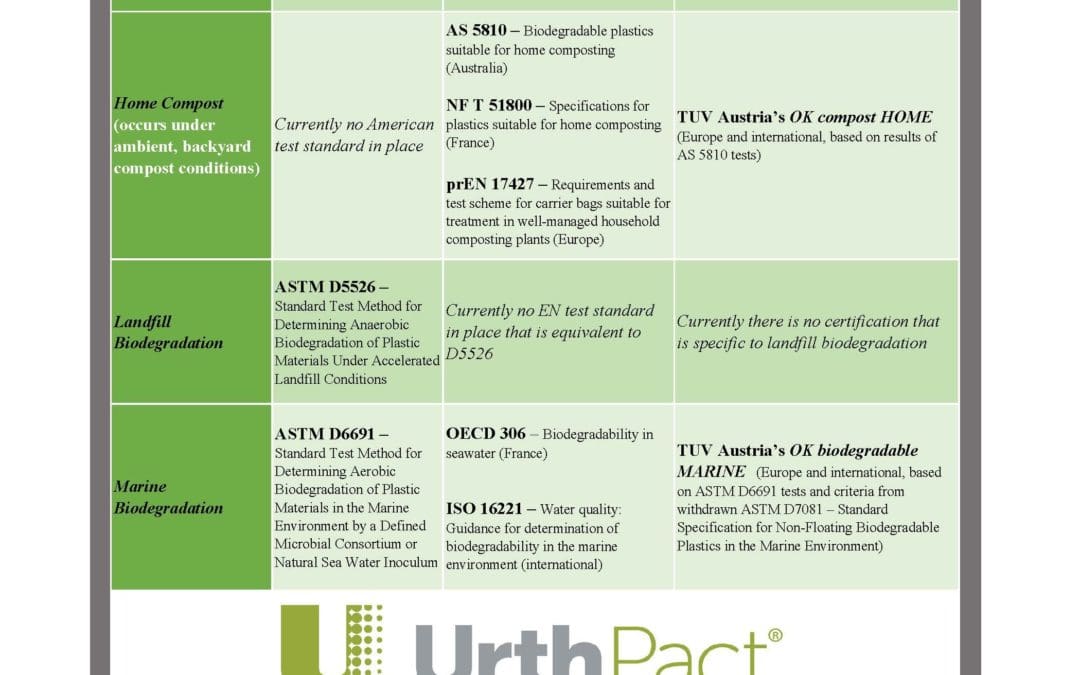
Certified Compostable Products: What to Look For and What It Means
As plastic pollution on our planet continues to spread and worsen, a variety of organizations have taken steps to reduce the amount of plastic used in their products. Companies like Nestle and Coca-Cola have committed to reducing the amount of plastic used in their bottles, as well as to use more recycled-content materials in their packaging. Recyling was a good plan to start with, but we cannot rely solely on the recycling industry to handle plastic pollution. We need a long-term, widespread solution. Plastics cannot be recycled an infinite number of times, so we need to consider what happens at the end of the material’s life. A new class of bio-materials have been introduced in the bioplastics industry in the past 10 years: compostable bioplastics. These materials provide the same necessary characteristics of traditional plastics, but will biodegrade and compost at the end of their life. There are a wide range of compostable bioplastics, mainly divided into two classes: industrially (or commercially) compostable, and home compostable.
INDUSTRIALLY (COMMERCIALLY) COMPOSTABLE
A product that is labeled as industrially or commercially compostable requires increased temperatures and specifically formulated microbial conditions in order to be converted into useful compost. This is where materials like PLA (polylactic acids) fall. Made from a corn-starch or sugar-cane base, these materials retain many of the necessary characteristics of traditional petroleum-based plastics, but can be composted at the end of their lives. In the proper facility and under the right conditions, this process can occur in as little as 180 days.
In order to be labeled as “industrially compostable” or “commercially compostable,” there are certain tests and certifications that products must pass. In the US, commercially compostable products are tested via ASTM D6400 protocols and criteria. ASTM is the American Society for Testing and Materials. Standard D6400 is the Standard Specification for the Labeling of Plastics Designed to be Aerobically Composted in Municipal or Industrial Facilities. This standard provides a timeframe in which both disintegration (physical breakdown) and biodegradation/compost production (chemical breakdown) must occur: 180 days. And it also requires that, in the end, the final product is of no harm to the surrounding ecosystem (ie: is non-toxic). The equivalent standard in Europe and other parts of the world is EN 13432, which requires the same timelines and results.
Once a product passes testing, the results can be sent to a 3rd-party organization for certification. There are a variety of 3rd-party certifiers worldwide. In the US, the most well known is the Biodegradable Products Institute, or BPI. In Europe, the most known governing body is TUV Austria. They offer their OK compost INDUSTRIAL certification, which is the equivalent of a BPI certification in America. So, when examining a product that is industrially or commercially compostable, keep a look-out for ASTM D6400, EN 13432, BPI, and TUV Industrial logos. Products marked with these logos are certified compostable, and you can rest assured knowing that, if you dispose of them properly, they will live a completely circular lifecycle.
A key factor to address when considering industrial compost is the number of commercial compost facilities in the US. There are much fewer composting facilities than there are landfills or recycling plants. Most small and local communities don’t support a commercial composter. This is important to consider when choosing products to use and dispose of. The United States currently only has 185 full-time commercial composting facilities. So before choosing an industrially compostable product, be sure to confirm that your community has the means to properly dispose of it.
HOME COMPOSTABLE
Home compost is the next step forward from industrial compsot. Home compostable products and materials are designed to break down and compost in a home compost environment, at ambient temperatures and with a natural microbial community. This is what sets these products apart from their commercially compostable counterparts. One of the newest and yet most common home compostable bioplastics is called PHA (polyhydroxyalkanoates), and is made from a canola-oil base. When combined with other home compostable components, it also retains all of the necessary characteristics of petroleum-based plastics, while being able to compost at the end of its life.
The requirements for labeling a material as home compostable are much newer than those for industrial compost, as the need for these certifications has only come about in the past 5 years. Currently, ASTM does not provide a test standard for home compost, and BPI has not evolved to include home compostables in their certification schemes. Home compostable tests are based mainly on an Australian standard called AS 5810, entitled Biodegradable plastics suitable for home composting. This standard requires disintegration in 6 months, and biodegradation and compost formation in a year. Based on this test standard–as well as NF T 51800 from France and prEN 17427–TUV Austria provides their OK compost HOME certification. The marking signifies that a product is certified to compost in a home compost environment in under a year. Currently, there is no equivalent certification to OK compost HOME in the US, as BPI solely certifies for industrial compost. Therefore, when evaluating a compostable product choice, OK compost HOME is the best possible certification to look for.
WHAT ABOUT MARINE AND LANDFILL DEGRADATION?
The final area of certification to address is marine and landfill environments. It’s important to remember here the difference between composting (providing nutrients and fertilizer to the Earth) and biodegrading (breaking down to innocuous elements). In a marine environment, a material cannot become compost due to the liquid medium. In a landfill environment, there is no oxygen to convert innocuous elements into usable compost. Therefore, materials in these environments can have the ability to biodegrade, but not to compost.
In a landfill setting, ASTM D5526 tests for plastic materials that are suitable for anaerobic biodegradation under accelerated landfill conditions. This process not only reduces the volume of waste in landfills, but can also increase the feasibility of economic landfill-gas recovery. There currently is no equivalent to this test standard in other parts of the world. Therefore, products that indicate having passed testing for ASTM D5526 can be classified as certified landfill biodegradable.
In a marine setting, ASTM D6691 outlines the test standards for materials to be labeled as “marine degradable.” These test standards require physical breakdown in 3 months and biodegradation in 6 months. Other test standards surrounding marine biodegradability include OECD 306 from France and ISO 16221, an international standard. There currently is no certifying body for marine degradation in the US, but TUV Austria provides an OK biodegradable MARINE certification that works off of the test results of D6691. Ok biodegradable marine is based greatly off the since-withdrawn ASTM D7081, which outlined the pass-fail criteria for products tested via ASTM D6691. However, there is a key disclaimer when certifying a product as marine degradable. In order to avoid consumers simply tossing trash into the oceans because they know it will eventually safely biodegrade, the certification can only be issued to products that are meant for use in a marine environment (for example, fishing gear).
HOW TO KEEP IT ALL STRAIGHT
It’s a lot to process and keep track of. Due to past issues of greenwashing, compostable and biodegradable products have to abide by a multitude of regulations in order to communicate their environmental benefit to customers. Here’s a quick summary to help:
Compostable bioplastics provide a phenomenal solution to the single-use plastics problem. However, being educated on the certifications required for these products allows for us all to be informed businesses and informed consumers. Compost certifications are complicated. Different countries have different certifications and test standards, there are multiple standards worldwide that test for the same thing. However, by breaking it down simply, we can make educated choices in our packaging, and do our part to help solve the single-use plastics problem.

UrthPact Takes Pride in Being a 100% American-Based Manufacturer
Made in China. It’s a phrase many of us are used to hearing or seeing, but one that we didn’t pay much attention to until this coronavirus pandemic. And let’s be clear here: it has absolutely nothing to do with China’s position in this entire pandemic. The US workforce is experiencing one of the hardest times it ever has. With unemployment spikes rising to over 20% in the past weeks, the reason Made in America products have become so popular is to support and create jobs for the American people. At UrthPact, we are proud to be a part of that movement. We’ve always believed in the American workforce, and that they produce higher-quality and more health-conscious products than do their overseas counterparts. And we thread that message through the entirety of our company.
This week we celebrated Memorial Day. We honored the American men and women who lost their lives defending our country. We spent time with family (over social distance and video chat), and considered what the reopening of the country means for each and every one of us. As the single-use disposables industry continues to see increases in demand, we are working tirelessly to solve every problem, and to provide our customers with a 100% American-made, contaminant-free and food-safe product. And we keep moving forward, even if coronavirus has done everything in its power to hold us back. We are ramping up production of our home compostable straws and will be stocking our customer’s inventories in early June. Our coffee customers are experiencing higher demand than ever before. Our cutlery lines are preparing for an absolutely incredible new demand source. And everyone is keeping the planet in mind as they choose their disposables. If we’re going to use more disposables, why not choose ones that are healthy for the planet as well as for your customers?
To give you an idea of how many American workers you support when you choose UrthPact products, consider a single, wrapped, home compostable straw. Now, that straw started out as a canola plant that was sourced from American farmers. It’s then made into a home compostable, marine-degradable bioplastic resin by our American-based suppliers. That resin comes to UrthPact, where it is extruded into a straw. That process requires engineers and technicians to run the machines, operators to ensure a smooth flow through the production line, a quality team to inspect the product, and packagers and shippers to send it out. It then goes to a distributor or private-label brand, where that straw supports jobs in their sales and shipping departments again. And finally, it goes to the end-user, where it helps support take-out establishments, restaurants, and a variety of other single-use industries. Just one straw can provide jobs to a huge range of individuals in a variety of different industries.
Jobs are one of the most important things in America right now. We take great pride in being able to provide good jobs for our 100% American-based workforce. Our support of American workers, suppliers, partners, and their customers allows everyone to win. That’s part of our core mission here at UrthPact. Everyone deserves to win: us, our private label and brand customers, our distributor partners, their customers, our material suppliers, and our planet. So as we get back to normal life, we urge all private label brands, foodservice distributors, and all who provide single-use products to your customers, to assess the products you buy. Where are they made? How many Americans did they provide jobs to? Are they supporting people as well as the planet? Choose made in the USA. Choose to support the American people. Choose to protect our planet. Choose UrthPact.

Open For Business: Choosing American-Made Disposables Is the Way to Go
After over 60 days in quarantine, all 50 states have officially lifted stay-at-home orders. That’s right, our time cooped up indoors has finally come to an end. But as we begin to prepare to return to our normal, pre-corona, everyday lives, there’s a couple of things to take into account. And that’s what we’ve addressed this past week. As we get ready to dive headfirst into normal life, it’s time to restock and plan for the post-covid future that we’re facing. And in that process, it’s important to consider where your products are coming from, and the conditions they’re being manufactured in. We all want to take extra precautions to stay healthy when we leave the house, so what can you do to provide your customers with food-safe, contaminant-free, and high-quality products?
First and foremost: choose an American-made product, and specify that to your customers! America is ranked 4th on the Global Food Security Index for safety and quality of the products they produce. China on the other hand ranks 38th, and India even lower at 84th. Clearly, products made in the USA are of a much higher quality than those made overseas, and are more likely to come from a food-safe facility. The manufacturing industry in China and India–while having improved food-safety and cleanliness standards in the past 10 years–is so large and widespread that it is nearly impossible to enforce strong regulations. So even though there has been new legislation tightening the reins on the food and food packaging industries overseas, they are not nearly as well enforced as they are stateside.
Second: choose a product that is being manufactured in a Safe Quality Food (SQF) certified facility. As the coronavirus pandemic slowly comes to an end here in the US, food-safe and contaminant-free products are more important now than ever. Restaurants are even using wrapped, single-use cutlery in place of reusable metal cutlery to help keep customers safe as they slowly begin to reopen. But is wrapped cutlery really more sterile? Do you know where it came from, how it was manufactured, what standards it had to pass? An SQF certified facility guarantees products not only of the highest quality, but that are food-safe and contaminant-free. And in a post-covid world, that’s the most important thing you can provide for your customers: peace of mind and confidence in the products they use.
We’ve made it through one of the most tumultuous times in recent history. And we’ve learned so much because of it. Some of us want life to go back to exactly the way it was before corona, some think the world has been changed forever, and some fall in the middle of the spectrum. Reality is, we cannot stay cooped up in our homes forever, and we need the country to start getting back to some semblance of normal. Disposable products are an intricate part of that process. Take-out is still necessary, masks are still needed, and we need ways to protect consumers as they venture back out into the world. Disposables provide that. But where your disposables come from and how they’re made matters. So choose American-made to support the American workforce and guarantee the best quality. And choose SQF-certified to ensure food-safety and contaminant-free. And as a bonus? Choose compostable. As the single-use disposables industry surges, don’t let it be at the cost of the health of our planet. This is our chance to make a change for a planet and our country. Let’s take it.
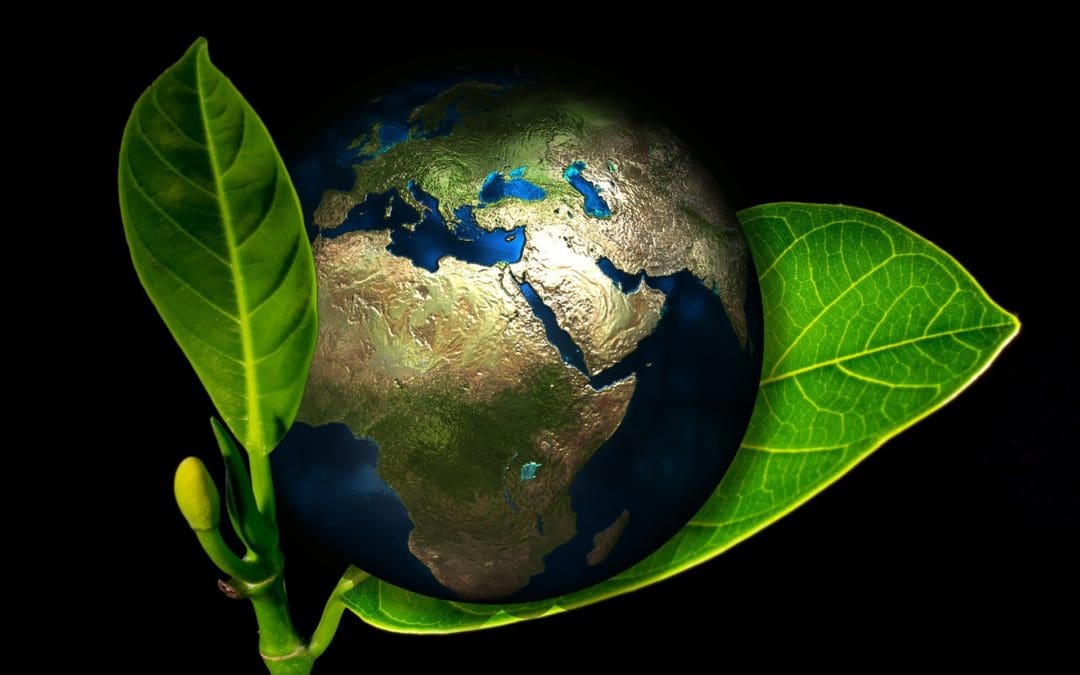
Greenwashing: The Pitfalls, the Risks, and the Best Ways to Choose a Truly Sustainable Product
Greenwashing began to rear its ugly head in the 1980’s, with a wide range of companies claiming to make “greener” choices for the positive publicity, while actively doing the opposite. These deceiving practices cost these companies huge sums, as well as led to the development of a variety of regulations on green marketing. Today, the line between green marketing and greenwashing is constantly blurred. How is calling something “eco-friendly” different from calling it “biodegradable?” What’s the difference between “biodegradable” and “compostable?” Understanding these terms and the ways in which they are used can help you make the right choices when choosing products to provide to your customers.
Let’s start with biodegradable and compostable. These two terms are often used interchangeably. But the truth is, they aren’t synonyms and carry very different meanings. Yes, both refer to products and materials that can be broken down by living organisms to return to nature. The key difference is the products. The product of compostable breakdown is, well, compost. And the key characteristic of compost is that it provides nutrients to the ecosystem to support growth and development. The products of biodegradation are natural elements that return innocuously to the Earth, and provide no further benefits to the ecosystem. In a similar analogy to all squares are rectangles but not all rectangles are squares, all compostables are biodegradable, but not all biodegradables are compostable.
Greenwashing has given truly environmentally-friendly products a bad rap. There are beneficial compostables and biodegradables out there, but they’re so restricted by greenwashing regulations, it can be hard to tell them apart from their less-than-truthful competitors. Here are a few ways to avoid getting caught up in greenwashing:
- Avoid very generic phrases like “eco-friendly.” Their generic nature means the provided environmental benefit may be very minuscule or nonexistent.
- Look for valid, 3rd-party-certification stamps and logos. Some of the most common are BPI (Biodegradable Products Institute), TUV Austria’s OK compost and OK biodegradable, ASTM standards and CMA (Compost Manufacturing Alliance).
- State the facts. If your product has been certified compostable or biodegradable, get as much information in front of the consumer as possible. The more facts a consumer has, the more valid your claim becomes.
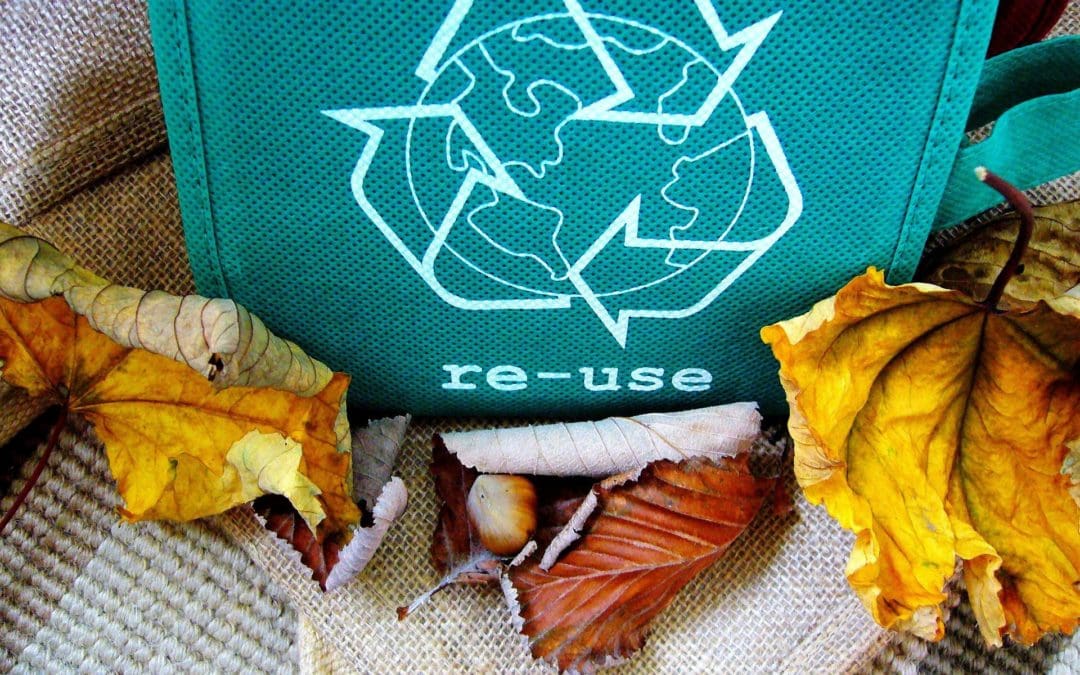
Relying on Recycling vs. Bringing on the Bioplastic – The Best Solution for America’s Plastic Pollution Problem
Reduce, Reuse, Recycle. The 3 R’s. Basically the everyday American’s system for living a “greener” lifestyle. But are the 3 R’s really working to solve the plastic crisis that’s sweeping our planet? Reduce and reuse definitely — they eliminate single-use plastics at the source, decrease demand, and allow us to produce fewer single-use plastic products that will inevitably end up in oceans and landfills. But is recycling the solution on the back end? Is it really helping to eliminate plastic waste in our oceans and landfills? We’ve treated recycling like a cure-all for the plastic disease taking over our planet when in reality, the system is struggling, and barely catches a small fraction of the total plastic waste produced and disposed of yearly.
Let us break it down for you. When plastic gets recycled, it very rarely is truly recycled into a product of the same quality as it was previously. Most often, things are downcycled into a product of lesser quality. Most plastics can only handle one extra life cycle through this process. They then are no longer suitable to be recycled and are disposed of in a landfill or incinerator. So, while we get a little bit more time out of that material, we still reach the same end result. The recycling system is also much more complex than most people think. There are 7 different types of plastics, all of which must be sorted from each other during the recycling process. And most small objects, like straws and bottle caps, quite literally slip through the cracks and are too small to be recycled. Materials also have to be cleaned in order to be recycled, so anything with food remains on it is often sorted out for landfill disposal.
In 2017, the US produced over 35 million tons of plastic waste. Of that plastic waste, only about 3 million tons were recycled, and about 5.5 million tons were combusted with energy recovery. The other 26.5 million tons were landfilled. Clearly, we’re doing something wrong. So what’s the solution? If we can’t rely on recycling to make a better end-of-life for single-use plastic products, what can we do? The first thing is to realize that single-use packaging isn’t the problem. The problem here is that we chose to make products meant to be used for 5 minutes from a material meant to last for hundreds of years. The true solution to the plastic epidemic is changing the material: bringing on the bioplastic future.
Compostable bioplastics solve the issue of our overflowing landfills and polluted oceans. PLA (polylactic acids)-based compounds will break down in commercial compost settings in under 3 months. Materials in the PHA (polyhydroxyalkanoates) family will break down in home compost in under a year, as well as in landfills and marine environments if it accidentally ends up there. Between these two materials, we have the ability to completely change the face of the single-use industry. Not only do compostables have a better end-of-life than petroleum-based plastics, but they have a better beginning-of-life too. There are no toxic chemicals involved, no usage of “old carbon.” And their life cycles are completely circular, as the compost created at the end of their lives can be used to support the growth of the sugar cane, canola plants, or starches they are made from.
The 3 R’s were a great place to start. But it’s now time to adjust our thinking for the ever-changing society we live in and the planet we live on. Recycling can’t do it alone. The system is too complex and selective to actually make a dent in the amount of plastic waste we produce yearly. By beginning the transition to bioplastics, we will be making a greater impact on the planet than we can imagine. Mother Nature is depending on us, and it’s time we stepped up and did something about it.
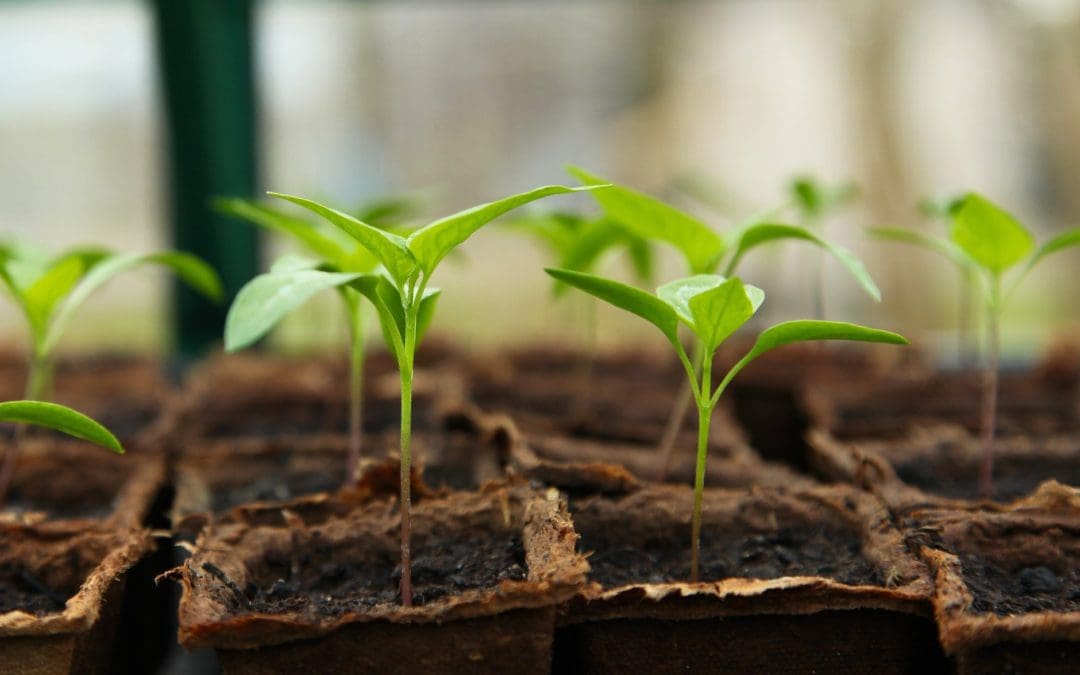
The Home Compostable Revolution for Single-Use Products
Last week’s 50th Anniversary celebration of Earth Day could not have come at a better time. As we continue to see changes in our planet as a result of the self-quarantine of human beings, it’s important to look to the post-COVID future. We don’t want to undo all of the work Mother Nature did while we were away. We need to take this opportunity and run with it and continue to make changes that will support our planet and our society as well. One of the largest problems to tackle is single-use plastics. They’ve created a noose around the neck of our planet, which hasn’t loosened at all during the quarantine. It has simply changed from a noose of plastic bottles to a noose of rubber gloves. This week, UrthPact is diving into the revolutionary solution to our single-use problem: home compostable bioplastics.
Home compostable truly is the future of the plastics industry. The base of home compostable bioplastics is a material called PHA, or polyhydroxyalkanoate. It’s a type of compostable polymer that is naturally produced by a variety of microorganisms. Made from the products of canola oil production, PHA can be combined with other compostable materials to produce products with a wide range of characteristics. One incredible organization that has truly jump-started the bioplastic revolution is Danimer Scientific. Based out of Bainbridge, Georgia, Danimer combines biotechnology and engineering to produce PHA for use in a variety of different projects. As a long-time partner with Danimer, UrthPact has been working alongside Danimer scientists to develop the Nodax™ PHA resin, as well as to put it to use in our products.
Let’s look into the details a bit. What truly makes home compostable materials revolutionary? The clearest answer is the fact that they are certified for home compost. Home compostables are different from all of the other “compostable” products out there. Many of those are industrially compostable, meaning they are made with a different bioplastic called PLA (polylactic acids), and require added heat and microbes in order to compost. Home compost is a whole new opportunity, as it means that this material and products made from it can compost not only in your own backyard but anaerobically in landfills and in marine environments if they accidentally get there. The compost produced can then be used to support the growth of new canola plants. This gives home compostables a completely circular lifecycle, something that will never be able to be said of traditional petroleum-based plastics. Because it’s about the beginning of the material’s life too. Creating products with petroleum-plastics is very unhealthy for the environment, while PHA production is completely clean and green.
A lot of people want to ban single-use plastics outright. But realistically, that will never work. How could we have combated coronavirus without single-use gloves? Or masks? Or food packaging? Bans are short-sighted. Home compost is the true solution for the single-use industry. And with a revolutionary base material like PHA plus the technology to use it to create home compostable products on an industrial scale, we are just on the cusp of completely blowing apart the mold. At UrthPact, our partnership with organizations like Danimer Scientific gives us the opportunity to be at the forefront of this revolution. Our home compostable straws are just the first step towards the bioplastic future. We’ve joined in the revolution. Will you?
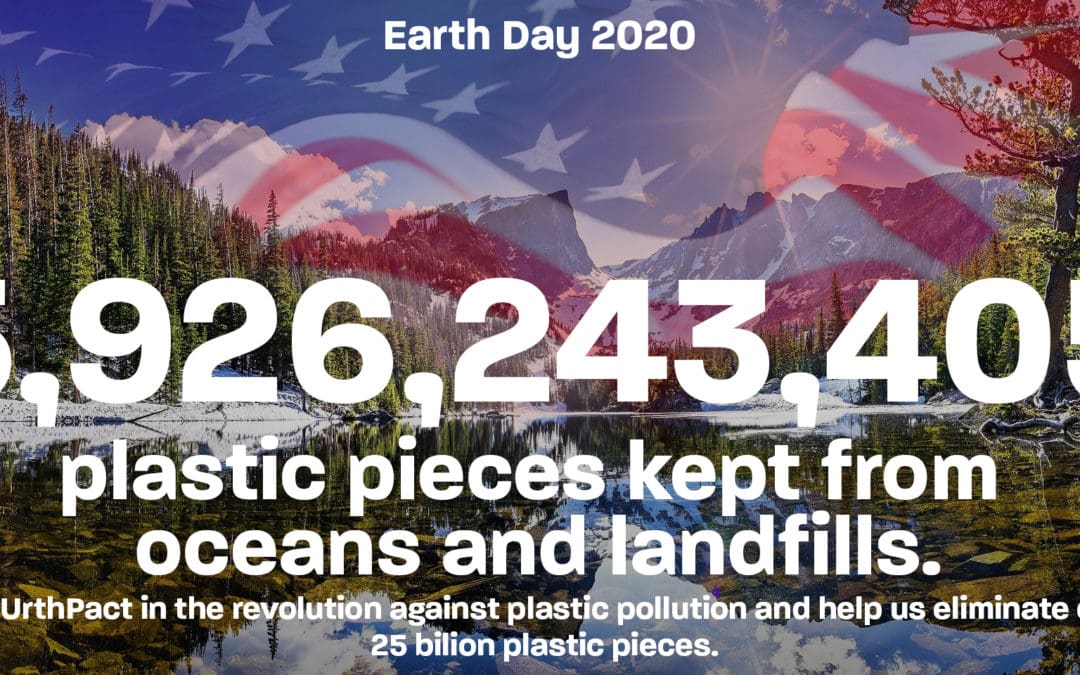
Earth Day 2020: People Healthy and Planet Healthy
We just reached the one month mark of this quarantine to help slow the spread of the pandemic that has threatened millions of people worldwide. Humans as a species have withdrawn into our homes, and planet Earth has taken advantage of our absence. Waterways are cleaner, the ozone is healing, and a variety of animals have returned to lands they used to inhabit. And while this is incredible, we have to take a realistic view of the future. We can’t stay inside forever, and the planet also can’t take our abuse forever. We need to find a way of life that’s safe for us and safe for the Earth. One of the biggest factors in our suffering planet is plastic pollution. Single-use products litter nearly every natural surface on Earth. So how do we balance single-use convenience with something healthy for the planet? Easy: compost.
Compostable bioplastics are an emerging industry that is the true solution to the plastic noose that is strangling our planet. And not only are they healthy for the planet, they’re healthy for people too. The production process for traditional plastics releases a wide range of unhealthy chemicals into the atmosphere. However, PLA (polylactic acid) and PHA (polyhydroxyalkanoate) — the two most common bioplastics — are both naturally occurring. PLA is plant-based, while PHA occurs naturally in a variety of microorganisms. Therefore, making single-use products from these bioplastics has no negative effect on the environment. And when they reach their disposal, they compost and feed the Earth rather than polluting it and poisoning it.
At UrthPact, our goal is to create a world where consumption leaves no footprint. By engineering private-label single-use products from compostable materials, we are able to provide the convenience that customers expect with none of the environmental guilt or harm to the planet. However, good for the planet wasn’t enough for us. We also wanted to be sure that our products were safe for your customers. So, we made sure all of our manufacturing facilities were Safe Quality Food (SQF) certified, and our American-Made products are always of the highest-quality.
The planet is depending on us. But your customers are depending on you too. There has to be a solution that satisfies both sides. We’re here to tell you that there is. And we’ve found it. Switching to compostable products, like those made at UrthPact, are the key to saving our planet from plastic. As we celebrate Earth Day this week, we want to encourage you to do something to help the Earth. Whether it’s watering the plants on your front porch, swapping to compostable coffee pods from Cameron’s Coffee or San Francisco Bay Coffee, or vowing to start composting in your home, each and every one of us has the ability to change the world. So let’s make Earth Day Earth Week. Or maybe Earth Month? Or better yet, Earth Quarantine. With all of this time on our hands, we have a unique opportunity to change the world. Let’s take advantage of it.
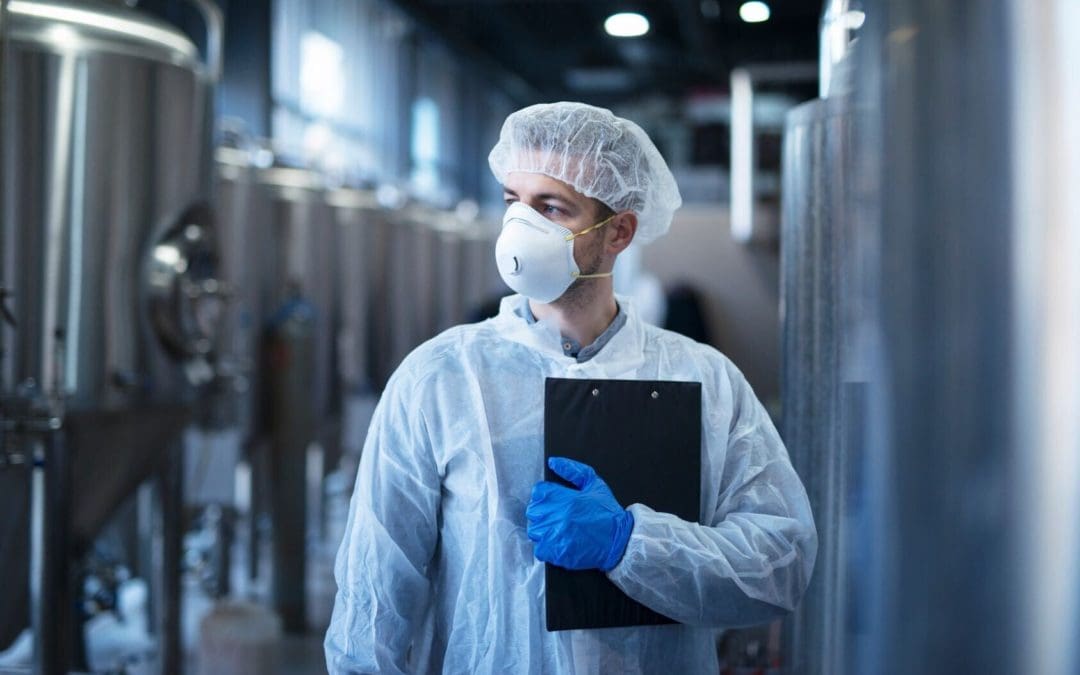
American Manufacturers Elevate Manufacturing Standards With Top-Notch Safety and Quality
Have you ever dropped a piece of food on the floor, yelled “FIVE SECOND RULE!” picked it up, and ate it off the floor? Let’s admit, we all have. And while that’s a fine attitude to have in your own kitchen, it’s not an attitude you want to see in facilities where food and food packaging are being manufactured and handled. This week, we turned the spotlight on health and food safety regulations in America versus those in overseas facilities.
First and foremost: American facilities are better certified for food safety. The Safe Quality Food (SQF) certification is internationally recognized, and one of the strictest and most stringent standards worldwide for food safety. And while it’s an extra overseas, it’s the standard domestically. It guarantees an emphasis on food-safety on the part of the manufacturer and their suppliers, as well as promises consistent, high-quality products. Brands and buyers take on less risk in partnering with SQF certified manufacturers, as they can rest assured knowing that food safety and quality are their top priorities. SQF even outranks the ISO 1900’s of the world.
Now, what about overseas? What type of regulations for safety (both food and employee) are in place, and how well are they enforced? Well, that’s the big problem. While nations like China have greatly improved their food safety measures over the last five years (including implementing SQF certifications at a handful of locations), their food processing and production industry is so large and widespread that these new regulations aren’t being enforced. And the proof is in the numbers. There are more than five times as many work-related deaths per day in China than in the US1,2. The US is ranked #3 in the world for food-safety, behind only Singapore and Ireland, while China ranks #35 and India even lower at #723. Why haven’t we stopped purchasing from overseas when clearly, the US is safer and healthier?
In the current state of the world, food safety certifications are more important than ever. And as manufacturers continue to work day and night to produce the products we need to go about our everyday lives, plants throughout the country are implementing a huge range of safety and health measures to protect their employees. At UrthPact, all of our office staff are working from home, and our committed operators, technicians and engineers take every possible precaution while at work, from frequent hand washing and hairnets (nothing new for us under SQF regulations) to masks, gloves, and distancing. We want to recognize all of our staff, as well as manufacturing employees nationwide who put themselves at risk so the rest of us can self-quarantine.
To sum it all up: you’ll be safer purchasing an American-made product than one produced overseas. This applies to food safety, as well as employee safety. So take some time out of your day to thank a manufacturing employee. To acknowledge the people that molded your coffee pods (check two of our incredible partners, Cameron’s Coffee and San Francisco Bay Coffee on Amazon!), packaged your Oreos, or made your to-go container. We are all in this together, we’ll get through this, and THANK YOU.
1Work safety. (2020, March 20). Retrieved from https://clb.org.hk/content/work-safety
2Occupational Safety and Health Administration: Commonly Used Statistics. (n.d.). Retrieved from https://www.osha.gov/data/commonstats
3Global Food Security Index 2019. (2019). Retrieved from https://foodsecurityindex.eiu.com/Index
